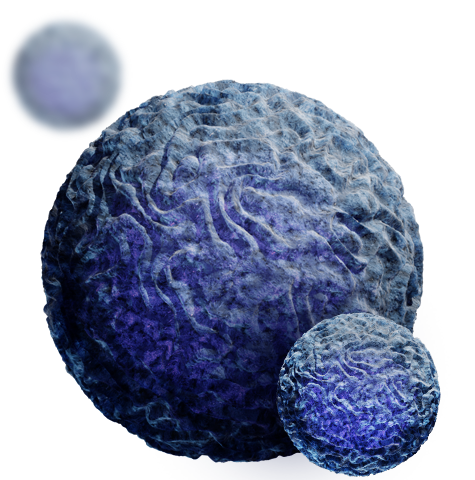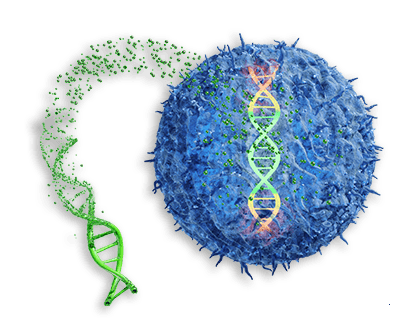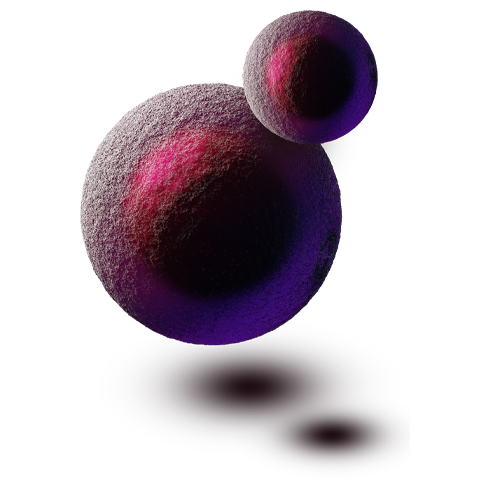Immunology Research Products and Resources
Research in immunology seeks to elucidate the form and function of organismal defense mechanisms. Immunity, defined as a physiological response to foreign agents aimed at maintaining homeostasis, is mediated by a complex array of humoral (e.g., secreted antibodies and complement) and cellular mechanisms which have been classified under innate or adaptive immunity. Innate immunity is rapidly activated following exposure to foreign agents (e.g., bacteria and viruses), and represents a first line of defense, but lacks specificity. In contrast, adaptive immunity is engaged at a later time and involves receptors with the capacity to rearrange and recognize an almost infinite number of non-self antigens.
Table of Contents

Immunology Disease Types
Browse research products by immunology disease type:
| Infectious Diseases | Allergy, Asthma and Inflammation (at R&D Systems) | Arthritis (at Tocris) | Multiple Sclerosis (at Tocris) |
| Autoinflammatory Diseases (at R&D Systems) | Atherosclerosis (at R&D Systems) | Hematologic Cancers (at R&D Systems) |
Immunology Research Areas
Browse research products by immunology research area:
| Adaptive Immunity | Antibiotics | Antivirals | B-Cell Development |
| Cells of the Immune System (at R&D Systems) | Complement System (at R&D Systems) | Cytokines & Receptors | Host Defense/Innate Immunity (at R&D Systems) |
| Immune Cell Characterization | Immune Cell Modulation & Function | Immune Cell Selection & Culture | Immune Cell Signaling (at R&D Systems) |
| Immune Cell Therapy | Immune Checkpoints | Immune Response Analysis | Immune System Development (at R&D Systems) |
| Immunology Cell Identity Markers (at R&D Systems) | Immuno-Oncology | Immunosuppressants | Infectious diseases |
| Inflammasomes | Inflammation (at R&D Systems) | Innate Immunity | Innate Lymphoid Cells (at R&D Systems) |
| Myeloid-derived Suppressor Cells (MDSC) | Pattern Recognition Receptors (at R&D Systems) |
Antivirals
Immune Cells
| B-Cells | Dendritic cells | Natural Killer Cells | Macrophages |
| Basophils | Eosinophils | Neutrophils | Myeloid-derived Suppressor Cells |
| T cells | Monocytes | Mast Cells | CD4+ T Cells |
| CD8+ T Cells |
Immune Cell Signaling
General Immunology Targets
Non-Viral Gene Transfer With TcBuster™
Realize the potential of gene engineering by partnering with our experts. Engineer any cell type including T cells, NK cells, and iPSC with our non-viral TcBuster gene delivery system.
- TcBuster shortens the timeline and cost for engineering your cells.
- TcBuster delivers larger cargo sizes compared to virus-based methods.
Immunology Research Tools and Resources
View all Tools and Resources
- Molarity Calculator
- Spectra Viewer
- Interactive Signaling Pathways
- Flow Cytometry builder
- Simple Plex Panel Builder
- Simple Western Assay Kit Builder
- Simple Western Antibody Database
- Milo Antibody Database
- ELISA Metrics
View all Immunology Literature
- Driving CAR T-Cells in the Fast Lane to Market
- 4 Essentials of Immunoassay Quality
- Immune Cell Isolation & Culture Product Guide
- Immunohistochemistry (IHC) Handbook
- Cell Markers Guide to Human Immune Cell Characterization
- A Simple Flow Cytometry-Based Assay for Detecting Chimeric Antigen Receptor (CAR) Expression Using Fluorokines™
- ELISA Tips and Tricks Poster
- Signaling in Innate Immunity Poster
View all Immunology Protocols
- Western Blot Protocol
- Chromogenic Staining of FFPE Tissue Protocol
- Chromogenic Staining of Frozen Tissue Protocol
- Fluorescent Staining of FFPE Tissue Protocol
- Fluorescent Staining of Frozen Tissue Protocol
- Flow Cytometry Protocol
- Sandwich ELISA Protocol (Direct Detection)
- Sandwich ELISA Protocol (Indirect Detection)
- Quantikine ELISA Protocol (at R&D Systems)
- More Immunology Protocols on R&D Systems
View all Immunology Articles
Innate and Adaptive Immunity
Immune responses are effected by distinct subsets of cellular mediators. Innate mediators express receptors that recognize foreign molecular patterns, allowing the rapid targeting of pathogens (e.g., by phagocytosis). In comparison to innate responses, engagement of adaptive immunity occurs with a delay, but B and T cell receptors allow the identification of a broad diversity of antigens, making adaptive responses highly specific.
Extensive cross talk, via both humoral and cellular mediators, occurs between these two immune modalities. While innate immunity lacks memory and therefore is unable to improve with experience, the ability of innate cells to stimulate and modulate adaptive responses (e.g., through antigen presentation) makes this branch of immunity essential for mounting an effective response.
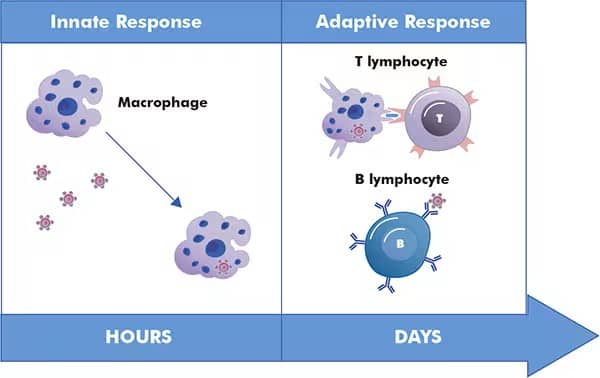
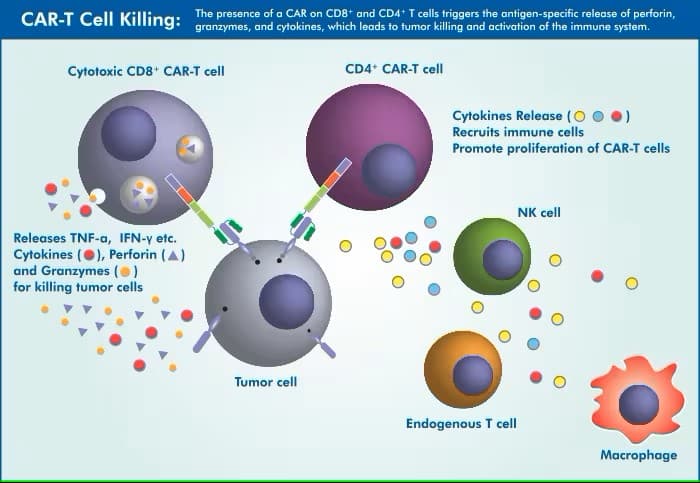
Application of basic immunological principles has supported rapid growth in the development of immunotherapy strategies, particularly for cancer treatment. Among these, the development of Chimeric Antigen Receptor-T cell (CAR-T) based therapies, which rely on the genetic manipulation of T cells to express antibody-based chimeric receptors to efficiently target tumor antigens, have significantly transformed the approach to cancer treatment.
Cruvinel ,W de M, Mesquita, D Jr, Araújo, JA, et al. (2010) Immune system - part I. Fundamentals of innate immunity with emphasis on molecular and cellular mechanisms of inflammatory response. Rev Bras Reumatol. 50(4): 434-61. PMID: 21125178 Getz, GS. (2005) Thematic review series: the immune system and atherogenesis. Bridging the innate and adaptive immune systems. J Lipid Res. 46(4): 619-22. DOI: 10.1194/jlr.E500002-JLR200 Golubovskaya, V., & Wu, L. (2016). Different subsets of T cells, memory, effector functions, and CAR-T immunotherapy. Cancers. 8(3): 36. PMID: 26999211 Stewart, J. (2012). Innate and acquired immunity. In Medical Microbiology: Eighteenth Edition. https://doi.org/10.1016/B978-0-7020-4089-4.00024-X |
